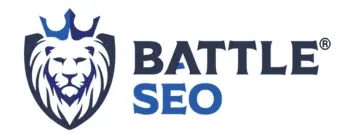Backlinks are a cornerstone of search engine optimization (SEO), serving as critical endorsements that can significantly elevate a website’s authority and relevance in the eyes of search engines. As businesses strive to improve their online visibility and drive more traffic to their services or goods, understanding the interplay between authority building, entity recognition, and the strategic use of backlinks becomes paramount. This article will delve into the nuances of these concepts and offer actionable insights on harnessing the power of backlinks to construct a robust online presence that search engines and users alike will trust and value. Whether you’re a seasoned digital marketer or a business owner eager to enhance your SEO efforts, the forthcoming sections will equip you with the knowledge to build a solid foundation for long-term digital success.
What constitutes authority building in SEO?
Authority building in SEO revolves around establishing the credibility and trustworthiness of a website or a web page in the eyes of search engines. This process involves on-page and off-page SEO strategies, such as producing quality content and getting valuable backlinks from reputable sites.
How does entity building relate to SEO?
Entity building enhances search engines’ understanding of a particular subject or topic. This involves organizing and structuring the content to enable search engines to easily determine the relevance of the content to specific search queries.
Understanding Authority and Entity in SEO
Delving into the Search Engine Optimization (SEO) world, we encounter pivotal terms like ‘authority’ and ‘entity’ that shape a website’s prominence and relevance in search outcomes. Authority measures a site’s trustworthiness, credibility, and quality as judged by search engines. Websites that boast high authority are typically pillars of their industry, offering valuable and dependable content, which in turn magnetizes a wealth of backlinks from other esteemed sources.

On the flip side, entities are distinct concepts within SEO that can range from individuals, places, and brands to organizations or even abstract notions. Recognized by search engines as coherent units with specific meanings, entities transcend mere keywords. Search engines like Google harness entities to delve deeper into user queries and the intricate web of content relationships, leading to more refined search outcomes.
There’s a dynamic interplay between authority and entity in the realm of SEO. To build a website’s authority, one must also cement its status as a recognized entity within its niche. Similarly, as an entity garners more references across the web, its authority naturally swells, bolstering its SEO position.
Grasping these concepts is crucial for SEO experts and website owners who aspire to elevate their digital footprint and climb the search engine rankings. Backlinks emerge as a critical factor in this endeavor, acting as endorsements that search engines interpret to gauge a site’s significance and reliability.
Defining Authority and Entity Concepts
When we speak of authority in SEO, we’re referring to the level of trust and esteem that search engines attribute to a website. This trust is a passport to higher rankings in search results for relevant queries and is cultivated through various means, most notably by securing backlinks from other distinguished and high-caliber websites. These endorsements accumulate over time, signaling to search engines that a site’s content is valuable and worthy of being presented to users.
As we’ve established, entities take a more comprehensive approach to organizing and interpreting internet content. They extend beyond keywords, encapsulating the entire context surrounding a term or concept. Search engines identify entities through structured data markup, natural language processing, and user interaction data, amalgamating an entity’s digital footprint into a singular, recognizable concept. A well-defined entity occupies a distinct place in the search engine’s knowledge graph, simplifying the task for algorithms to match the entity with pertinent search inquiries.
In summary, while authority is cultivated through external endorsements and recognition, entities are shaped by their clear definition and identity. Their growth is mutually beneficial; a robust entity presence can increase authority, and as authority grows, so does the entity’s recognition, which in turn can positively influence a website’s search rankings and online visibility.
The Role and Impact of Backlinks on SEO
Why are backlinks important in authority building?
Acquiring backlinks from reputable websites helps the site or page gain authority in the eyes of search engines. Consider backlinks as votes of confidence. High-quality links from trusted sources can significantly improve a site’s SERP (Search Engine Results Page) rankings.
Backlinks, often considered the bedrock of SEO, are instrumental in shaping the search engine’s perception of a website’s credibility and relevance. These hyperlinks, which connect one website to another, act as endorsements, signaling to search engines that the content on the receiving end is of notable quality and value.

The potency of backlinks is not merely in their quantity but in the stature of the linking domains. A hyperlink from a domain with a sterling reputation and high domain authority is a powerful asset, far outweighing a link from a site with minimal recognition. This distinction arises from the assumption that authoritative sites are judicious in their linking, only pointing to content that meets a high-quality standard.
Backlinks also play a pivotal role in aiding search engines in discovering new web pages. As these digital crawlers navigate the web, they use the links to index content, and a robust network of quality backlinks can signal that a webpage is a valuable resource deserving of a prominent position in search results.
The influence of backlinks extends to outbound links as well. A website that links to other relevant and authoritative domains contributes to a vibrant linking ecosystem, which search engines interpret as a positive indicator of the site’s engagement with the broader web.
In essence, backlinks are indispensable navigational tools that guide search engines in evaluating web content quality, relevance, and authority, ultimately shaping a site’s visibility and ranking in search engine results pages.
Quality and Relevance of Backlinks
The twin pillars of backlink efficacy are quality and relevance. A backlink’s quality is gauged by the trustworthiness and authority of the originating site, which can be inferred from factors such as the site’s longevity, its network of backlinks, and its adherence to SEO best practices.
Relevance, meanwhile, concerns the thematic and contextual connection between the linking and linked domains. A backlink is most effective when it originates from a domain that shares a common industry, subject matter, or audience with the target site. This relevance is crucial for search engines to determine the link’s usefulness in a user’s search query.
When quality and relevance converge, they create a formidable force in backlinks. A link from a respected industry journal or an influential blog within a specific niche is exponentially more beneficial than a link from an unrelated or obscure website.
The anchor text of a backlink also contributes to its effectiveness. Ideally, it should be descriptive and pertinent to the linked page’s content, incorporating relevant keywords that feel natural within the text.
Backlinks that meet these criteria of quality and relevance not only enhance a website’s authority and drive targeted, engaged traffic with higher conversion potential. Conversely, links lacking these attributes can undermine a site’s credibility and sometimes trigger search engine penalties or negatively impact rankings.
Therefore, a strategic approach to backlink building should prioritize securing links from reputable, contextually aligned sources, fortifying a website’s reputation and search engine presence.
Is the quantity or quality of backlinks more important for entity authority?
The quality of backlinks holds more weight in entity authority. Search engines prioritize the linking sites’ relevance and authority over the links’ quantity. Therefore, the focus should be on getting links from high-authority and relevant sites.
Effective Backlink Strategies for Authority and Entity Building
Crafting a robust backlink portfolio is pivotal for amplifying your site’s stature and solidifying its status as a recognized entity in the digital realm. A multifaceted approach to backlink acquisition augments the number of inbound links and enhances their caliber, echoing the significance of link quality and pertinence.

Consider the power of content that magnetizes backlinks naturally. Imagine crafting an exhaustive resource or a groundbreaking study that becomes the go-to reference in your field. Such content compels peers and industry authorities to cite your work, creating a web of organic links that bolster your site’s authority.
How can one build quality backlinks for authority establishment?
Creating high-quality content that attracts natural backlinks, guest blogging on reputable sites, creating infographics, link reclamation, and building relationships with other influential entities in the industry can aid in building quality backlinks.
Venturing into guest blogging on prominent platforms within your sector is another strategic move. This avenue showcases your expertise and secures valuable backlinks from domains with significant weight, aligning with your target demographic and industry ethos.
Fostering alliances and synergies with fellow businesses or influencers can be a goldmine for backlinks. Whether it’s a joint venture, co-created content, or shared promotional endeavors, these collaborations can lead to a reciprocal exchange of links that feels natural and authentic.
Digital PR presents another avenue for backlink success. Captivating narratives and press engagements can catch the eye of the media, leading to high-caliber links from news outlets and other esteemed platforms.
Underpinning these strategies is the necessity for a technically sound website. A site optimized for SEO, with precise metadata and strategic keyword usage, is more likely to attract backlinks, as it’s easier to link to and offers clear value.
Regular backlink audits and competitive insights are crucial for staying ahead of the curve. By analyzing the link-building triumphs of your competitors, you can adapt and refine your strategy for even greater success.
By weaving together these diverse tactics, you create a comprehensive backlink strategy that not only elevates your site’s authority but also cements its identity as a credible and relevant entity in the eyes of search engines.
Acquiring Authoritative Backlinks
Securing backlinks from esteemed websites demands a blend of strategic networking and creating content that resonates with the audience of those domains. Begin by pinpointing the titans within your niche—industry juggernauts, academic hubs, or influential media outlets. Focus on those with formidable domain authority and a sterling reputation for disseminating quality information.
Crafting a personalized outreach campaign is essential. To capture the attention of busy site managers or editors, your communication must stand out. Customize your message to highlight the unique benefits your content offers its audience and the synergies that a partnership could foster.

Engaging with influencers and thought leaders in your industry can pave the way to valuable backlinks. By actively participating in industry forums, commenting thoughtfully on their publications, and interacting on social media, you can nurture relationships that may eventually lead to organic backlinks.
Producing original research or insights that provide new perspectives can also entice authoritative sites to link to your content. Exclusive findings or innovative analyses are often irresistible to industry leaders looking to enrich their content with credible sources.
Reassess your existing content to identify pieces that can attract authoritative links. Reach out to top-tier sites with suggestions on how your content could enhance theirs, whether through in-depth explanations, supporting data, or a fresh point of view.
Lastly, positioning your brand as a go-to resource for journalists and content creators can result in authoritative mentions and backlinks. Platforms like HARO connect you with media professionals seeking expert input, which can lead to high-quality links from reputable publications.
In essence, acquiring authoritative backlinks is a strategic endeavor that involves targeted outreach, relationship cultivation, and the creation of content that resonates with high-authority domains. Aligning your brand with these reputable sources can significantly fortify your domain’s authority and visibility online.
Measuring and Tracking Backlink Effectiveness
To truly harness the power of backlinks in your SEO arsenal, measuring and tracking their impact is imperative. This process highlights the value these links add to your website and helps fine-tune your strategy for optimal search engine visibility.
Begin by examining the volume of backlinks you’ve secured. While a robust backlink profile is beneficial, it’s the intersection of quantity and quality that truly amplifies your site’s authority.
Delve into your backlink sources’ domain authority (DA) and page authority (PA). These metrics, indicative of a site’s potential influence, can offer a snapshot of the caliber of your backlinks. A higher DA and PA suggest that your site is earning nods from esteemed and credible web corners.
Next, turn your attention to traffic analytics to understand the direct impact of your backlinks. Scrutinize the referral traffic segment in your analytics dashboard to uncover the volume and behavior of visitors funneled to your site through these links. This analysis can reveal the relevance of your backlinks and the engagement they foster among your audience.
The composition of your backlink profile also warrants attention. Various sources and a natural spread of anchor text usage can signal to search engines the authenticity and strength of your site’s backlink structure.
Lastly, assess the conversion rates from referral traffic to quantify the return on investment (ROI) of your backlink efforts. Tracking conversions, whether they be leads, sales, or other actions, can pinpoint which backlinks are true assets to your business goals.
For these analytical endeavors, SEO professionals often turn to Google Analytics for traffic insights, Ahrefs and Majestic for comprehensive backlink profiles, and SEMrush for keyword performance and site audits that may reflect the influence of your backlinks.
By regularly monitoring these key indicators, you can adopt an agile approach to your SEO strategy, continuously refining and enhancing the potency of your backlinks for sustained search engine success.
Tools and Metrics for Authority and Entity Analysis
Navigating the landscape of authority and entity analysis in SEO requires a toolkit equipped with precise metrics and sophisticated software. Authority encapsulates the level of trust a website commands from search engines, while entity pertains to the site’s distinct identity and recognition within a specific niche or context.
Moz’s Domain Authority (DA) and Page Authority (PA) are pivotal tools in gauging a site’s prospective ranking power. These scores synthesize factors, such as the number of linking root domains and total backlinks, into a cohesive authority measure.
Majestic SEO’s Trust Flow and Citation Flow offer valuable insights for a more granular view. Trust Flow assesses the credibility of links pointing to a URL, forecasting the trust level of a page, while Citation Flow gauges the potential influence of a URL based on the number of linking sites.
Ahrefs stands out with its Domain Rating (DR) metric, which evaluates the strength of a website’s backlink profile on a scale from 0 to 100, providing a logarithmic perspective on backlink robustness.
Entity analysis delves into the intricacies of Google’s Knowledge Graph, which maps out the interconnections among various entities. SEMrush’s Entity Analytics and Google’s structured data testing tool can aid in aligning your site with recognized entities.
Branded search volume can serve as a barometer for entity recognition — the frequency with which users search for a brand or domain name signals the strength of its entity status.
With these specialized tools, Google Search Console offers a window into your website’s search performance, highlighting the queries that lead users to your site and the pages that enjoy prominent rankings — key indicators of your entity’s footprint.
By leveraging this array of metrics and tools, you can paint a comprehensive picture of your website’s authority and entity stature, identify areas ripe for enhancement, and strategically steer your online presence toward greater recognition and trustworthiness in the digital realm.
Mitigating Risks: Toxic Backlinks and Natural Link Profiles
Navigating the SEO landscape requires awareness that not all backlinks positively serve your site’s reputation. Indeed, toxic backlinks, originating from dubious or non-relevant sources, can tarnish your site’s credibility in the eyes of search engines, potentially triggering penalties or a decline in search rankings.

To safeguard your site’s SEO health, monitoring your backlink profile vigilantly is imperative. Utilizing tools like Google Search Console, Ahrefs, or SEMrush is indispensable. These resources offer insights into the domains linking to your site, allowing for a thorough evaluation of each backlink’s quality and pertinence.
Upon detecting toxic backlinks, endeavor to have them removed. This typically involves contacting the administrators of the linking sites to request link removal. Although this approach may not always bear fruit, it’s a crucial preliminary step before considering alternative actions.
When removal efforts prove futile, the Google Disavow Tool comes into play. By submitting a disavow file, you effectively communicate to Google which links should be disregarded when evaluating your site, thus shielding you from potential negative SEO repercussions.
Proactively managing your backlink profile is essential to fostering a natural-looking link profile. Such a profile evolves organically, featuring various backlinks from various domains with a healthy mix of anchor texts and a balance of follow and nofollow links.
Aim for a rich tapestry of backlinks from assorted web entities, including blogs, news outlets, educational institutions, and social media channels, to cultivate a natural link profile. Crafting content that appeals to a wide audience will naturally encourage citations across various topics.
In essence, curating a robust backlink profile is an ongoing endeavor. It’s not solely about the number or the caliber of the backlinks; the diversity and authenticity of your profile are equally vital. Continuous vigilance and periodic audits are the cornerstones of a resilient backlink strategy that enhances your site’s SEO stature.
Identifying and Disavowing Toxic Backlinks
Preserving the health of your website and its standing in search engine results hinges on the ability to pinpoint and neutralize toxic backlinks. These detrimental links often stem from low-quality or suspect websites and are marked by their irrelevance, spammy nature, or non-compliance with Google’s Webmaster Guidelines.
To spot these pernicious links, it’s advisable to perform regular backlink audits with the aid of SEO platforms such as Ahrefs, Majestic, or Moz. These tools can flag links that may be perceived as unnatural or spammy by search algorithms. During the audit, look for red flags like sudden surges in backlink numbers, links from unrelated business sectors, or links from sites previously sanctioned by Google.
The initial step after identifying harmful links is to seek their removal by courteously contacting the webmasters of the offending sites. Document these interactions meticulously, as they may prove your efforts to maintain a pristine link profile should you need to present them to Google.
When direct removal is not an option, Google’s disavow tool is the following line of defense. This feature enables webmasters to request that Google disregard certain links when appraising their site. Exercise caution with this tool, reserving its use for situations where many toxic backlinks persist and are believed to be detrimental to your site’s Google standing.
To disavow backlinks, compile a list of harmful URLs or domains in a text file formatted per Google’s guidelines and submit it through the Google Search Console. It’s paramount to be meticulous in this process, including only those links you are sure are harmful, as an incorrect disavowal could inadvertently damage your site’s performance.
Disavowing should be approached with deliberation, as Google’s algorithms are often capable of discerning and discounting many types of undesirable links. It’s a measure to be employed when there’s tangible evidence of harm. Ongoing vigilance and upkeep are essential to prevent toxic backlinks from eroding your site’s authority and search rankings over time.
Internal Links: Complementing Backlink Strategies
Internal links are the unsung heroes of SEO, weaving a web of connections within your domain. These hyperlinks, which guide users from one page of your site to another, are instrumental in distributing link equity—a measure of the influence and potential ranking power that a link can transfer to another page—and enhancing the navigational experience for your audience.

Imagine your website as a city map, with internal links serving as the roads connecting different neighborhoods (web pages). Just as a well-planned city allows for smooth traffic flow, a strategic internal linking system enables search engine crawlers to traverse your site efficiently, uncovering new content and deciphering the architecture of your digital domain.
When crafting internal links, it’s crucial to use anchor text that is both descriptive and pertinent to the destination page. This practice not only aids users in anticipating what they’ll find upon clicking the link but also gives search engines context for the content of the linked page, potentially bolstering its relevance for specific queries.
Moreover, internal links are a boon to user engagement. They encourage visitors to delve deeper into your site by offering pathways to additional, pertinent content. This can lead to a reduction in bounce rates and increase the time users spend engaged with your content. For instance, a blog post about the benefits of organic tea could link to your product page for organic green tea, keeping the reader engaged and subtly guiding them along the customer journey.
To maximize the impact of your internal linking strategy, focus on linking to new or pivotal pages that may not yet have a robust portfolio of external backlinks. This approach helps to elevate these pages’ authority and search visibility, weaving a stronger web of internal support.
Remember, the goal is to create a tapestry of links that is both meaningful and user-centric. By prioritizing the quality and context of your internal connections, you’ll ensure that your internal linking framework complements and enhances your external backlink efforts.
Internal Linking for Enhanced SEO
Internal linking is akin to reinforcing the framework of your website’s SEO. It’s about creating a robust infrastructure that supports navigation and underscores the thematic elements of your content to search engines. When executed with finesse, internal linking can be a potent tool for spreading authority, clarifying your site’s structure, and facilitating the indexing of your pages.
The journey begins with pinpointing your site’s cornerstone content—the pillars that offer comprehensive and valuable information. Channeling internal links from other pages to these content cornerstones elevates their stature and signals the primary themes your site addresses to search engines.
Contextual linking is the next piece of the puzzle. It’s essential to weave links that naturally fit within the content they spring from, creating a tapestry of relevant connections. Such contextual bridges are vital for search engines to understand the interplay between the various pieces of content on your site, thereby enhancing your site’s thematic strength.
An understanding of your site’s blueprint is also crucial. It allows you to craft an intuitive navigation flow and SEO-friendly. High-value pages, such as those designed for conversions or pivotal category pages, should be the focal points of your internal linking, receiving a greater share of internal traffic.
Moreover, consider the accessibility of your content. Aim to position important pages within a few clicks from the homepage, ensuring they’re easily discoverable. This three-click rule helps prevent valuable content from being buried too deep within your site’s structure.
The art of anchor text selection should not be overlooked. While keyword-rich anchors can convey relevance to search engines, it’s important to keep them varied and natural to sidestep any negative repercussions from search engines that may perceive overly optimized anchors as manipulative.
Lastly, regular audits of your internal links are indispensable to ensure all paths are clear and lead to relevant, live pages. Tools like Screaming Frog SEO Spider can be invaluable in this endeavor, helping you maintain a seamless user experience and a consistent flow of link equity.
Internal linking is not just a one-time setup but an ongoing strategy to refine and uphold your website’s organic reach. When meticulously planned and maintained, it becomes a formidable ally to your backlinking efforts, presenting a structured and user-friendly site that search engines can readily interpret and rank.
Sustainable Link-Building Tactics for SEO Success
Embarking on a journey of sustainable link-building is akin to cultivating a garden; it requires time, care, and a focus on nurturing relationships rather than pursuing immediate gains. This method emphasizes the importance of acquiring backlinks that are not only natural but also enduring, steering clear of any practices that might be construed as manipulative by search engines.

Consider the power of crafting content that captivates and educates your audience. Whether through insightful research, comprehensive tutorials, visually striking infographics, or dynamic videos, providing intrinsic value content can organically draw backlinks as it’s shared and cited across digital platforms.
Participation in online communities, whether on specialized forums or social media groups, can be fertile ground for link cultivation. By contributing meaningful dialogue and expert knowledge, you can establish a reputation leading to organic backlink opportunities from peers who recognize and appreciate your expertise.
Collaboration with influencers and thought leaders in your field can also yield a rich harvest of backlinks. This could be guest posts, joint content ventures, or inclusion in expert panels. These alliances often result in high-caliber backlinks and broaden your reach within the industry.
Forging connections with journalists and media outlets can position you as a go-to expert for commentary, leading to consistent mentions and backlinks in journalistic content. Additionally, refreshing and republishing outdated content can bring new life into your link-building efforts, as up-to-date resources are more likely to be linked.
Blocking your competitors’ backlink profiles can uncover potential link-building avenues. While imitation is not the goal, this reconnaissance can provide valuable insights into where your industry peers are finding success.
Sustainable link building is a marathon, not a sprint. It’s a commitment to ethical SEO practices that fosters a robust link profile capable of weathering algorithmic shifts and standing the test of time, thereby ensuring ongoing SEO triumphs.
Content-Driven Link Building
At the core of a sustainable SEO strategy lies content-driven link building, a method that hinges on the creation and distribution of content so compelling that it garners backlinks on its merit. This strategy deploys the allure of high-caliber content to magnetize links, sidestepping the need for direct solicitation or reciprocal arrangements.
The foundation of this approach is a keen understanding of your audience’s interests and the pulse of industry conversations. Analyzing content trends that have gained traction on various platforms allows you to uncover themes likely to spark interest and encourage linking.
Diversifying your content portfolio can cater to a broad audience and serve multiple purposes. In-depth explorations such as extensive articles, detailed guides, and revealing case studies can cement your status as an industry authority. Meanwhile, interactive elements like quizzes and infographics can amplify engagement and shareability.
Content rich in original research and data is a beacon for backlinks, offering fresh perspectives that others may cite. By contributing novel insights, your site can become a cornerstone resource in your niche.
Promotion is just as critical as creation; leveraging channels such as email campaigns, social media, and direct outreach to influencers can significantly boost your content’s visibility.
A well-planned content calendar ensures a steady stream of quality material, reinforcing your site’s reputation as a consistent source of valuable insights.
By centering your efforts on producing and promoting exceptional content, you set the stage for natural backlink acquisition. Such organic links are a testament to the authority and credibility of your content in the eyes of search engines, enhancing your rankings and solidifying your online authority.
Backlinks in the Greater SEO Landscape
Within the dynamic realm of SEO, the role of backlinks as a testament to a website’s reputation and expertise cannot be overstated. These digital nods of approval serve as powerful indicators to search engines, showcasing your content’s perceived value and reliability in the eyes of peers.
The strategy to garner backlinks should be rooted in integrity and a commitment to excellence, paving the way for sustainable growth in search engine rankings. The focus must be steadfast on nurturing an organic backlink portfolio by consistently delivering content that resonates with your audience and forging genuine industry relationships.
You can amplify your site’s authority by weaving in robust tactics like strategic internal linking and proactively neutralizing the impact of harmful backlinks. Regularly monitoring and analyzing your backlink profile with sophisticated tools is crucial to ensure its positive influence on your site’s visibility in search results.
Although the weight search engines place on backlinks may shift over time, the enduring truth is that the merit of quality will continue to triumph over sheer numbers. When leveraged with precision, backed by insightful analytics, and placed within the broader SEO framework, backlinks can boost your website’s discoverability, attract organic traffic, and nurture your digital presence. Essentially, they are a foundational element of SEO, interwoven with and bolstered by a spectrum of other optimization techniques.


